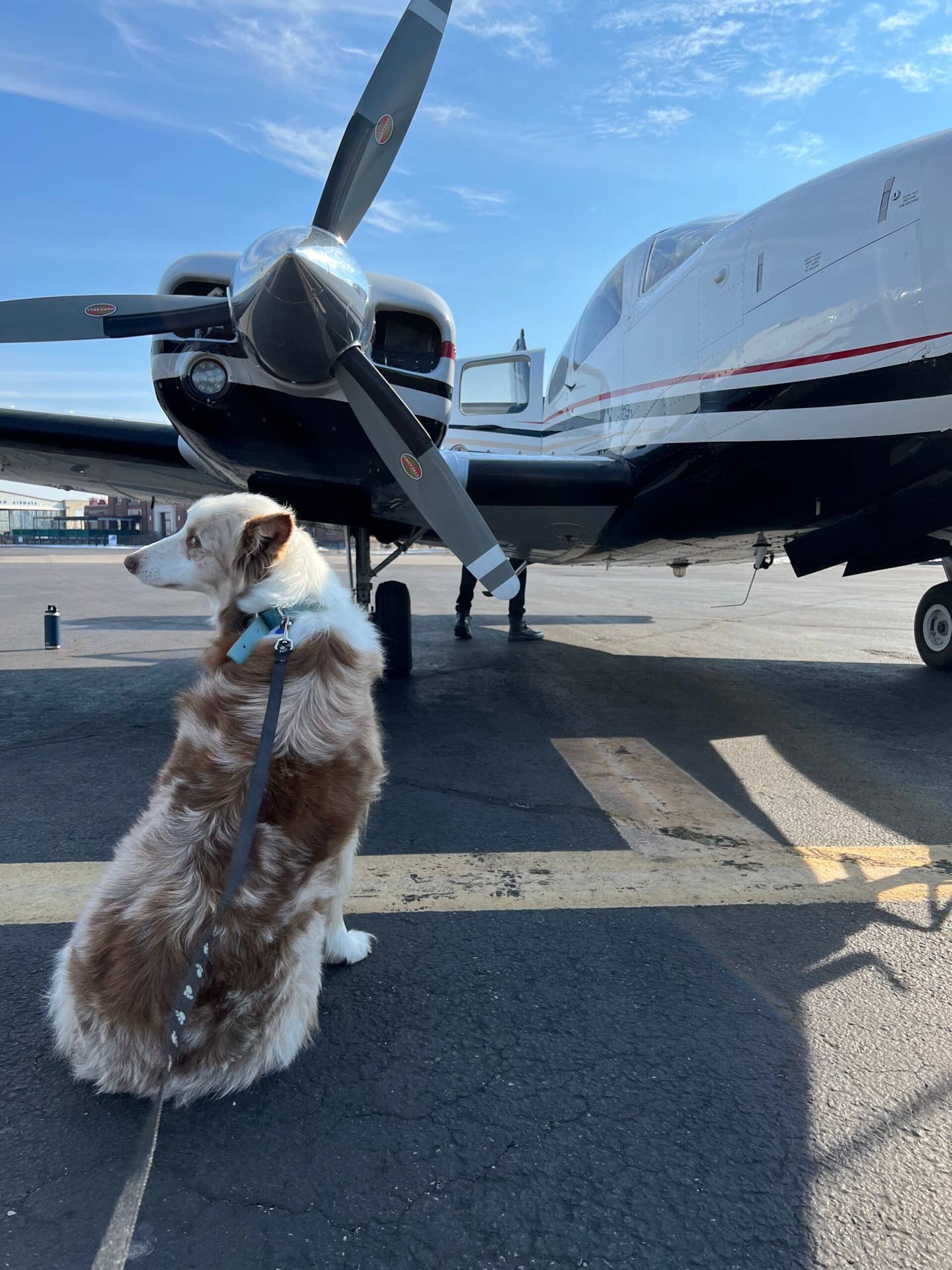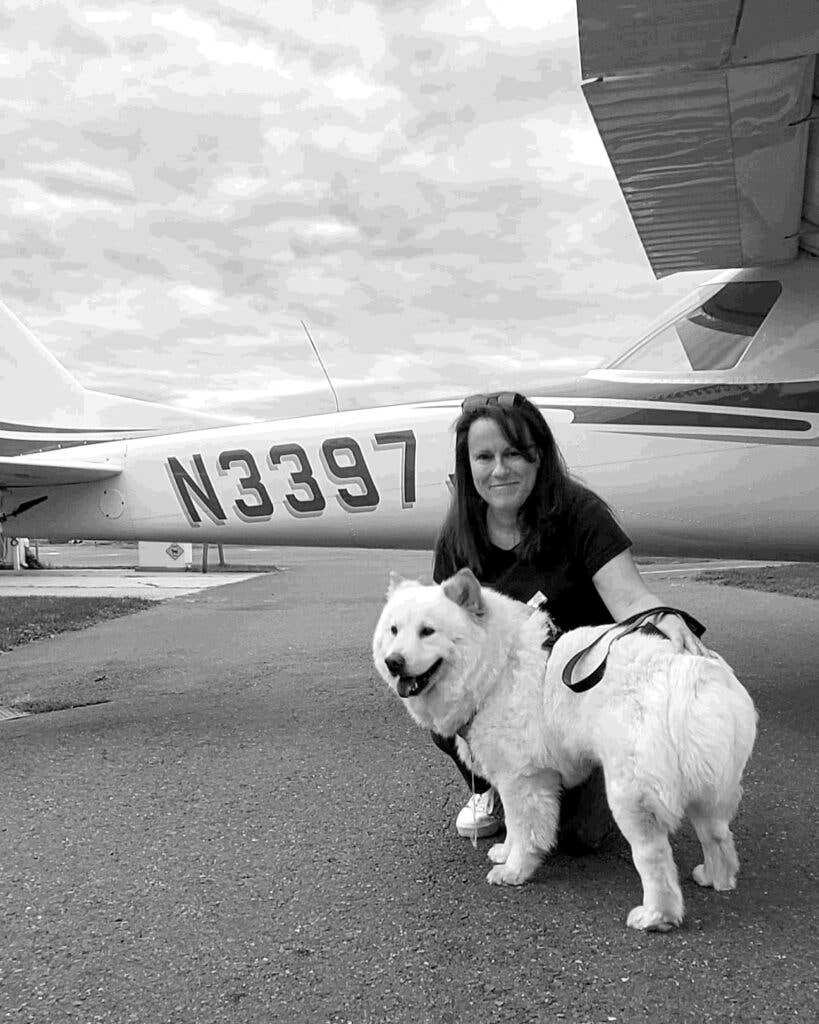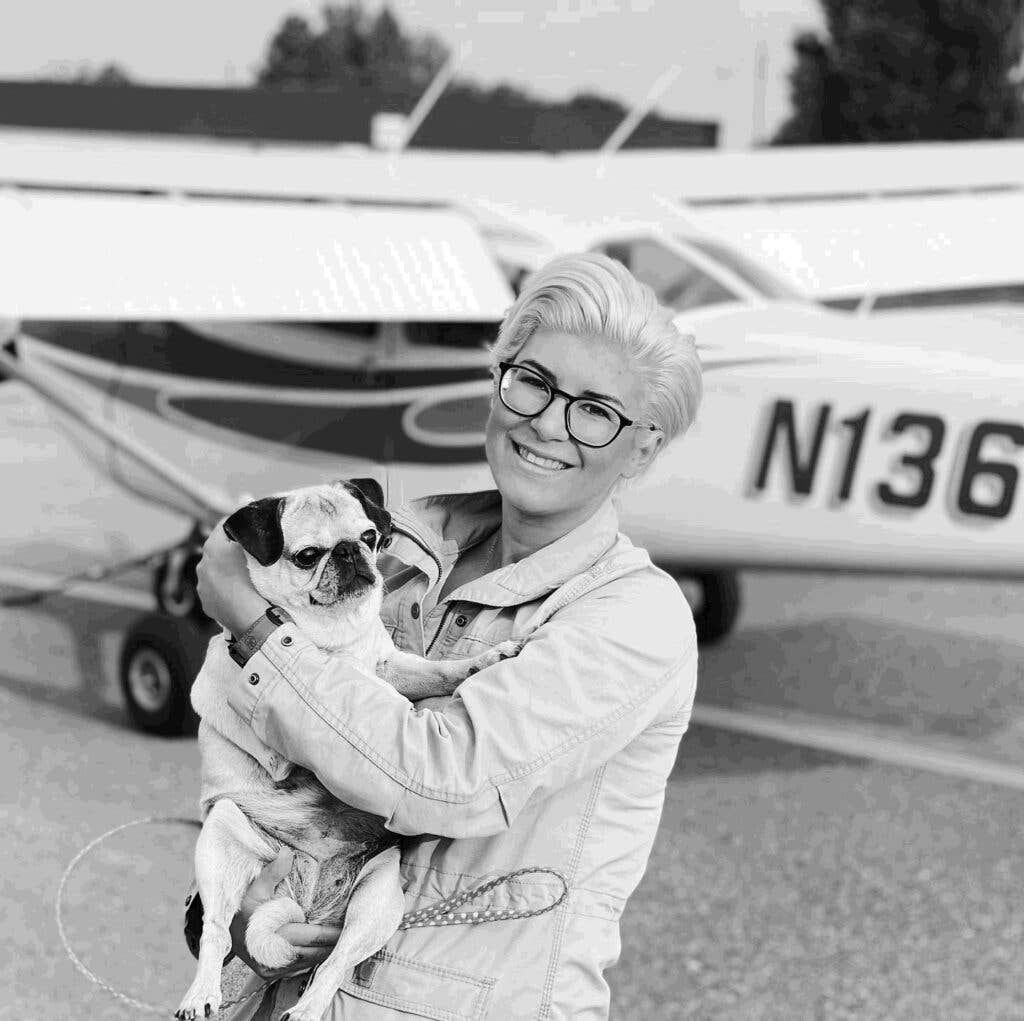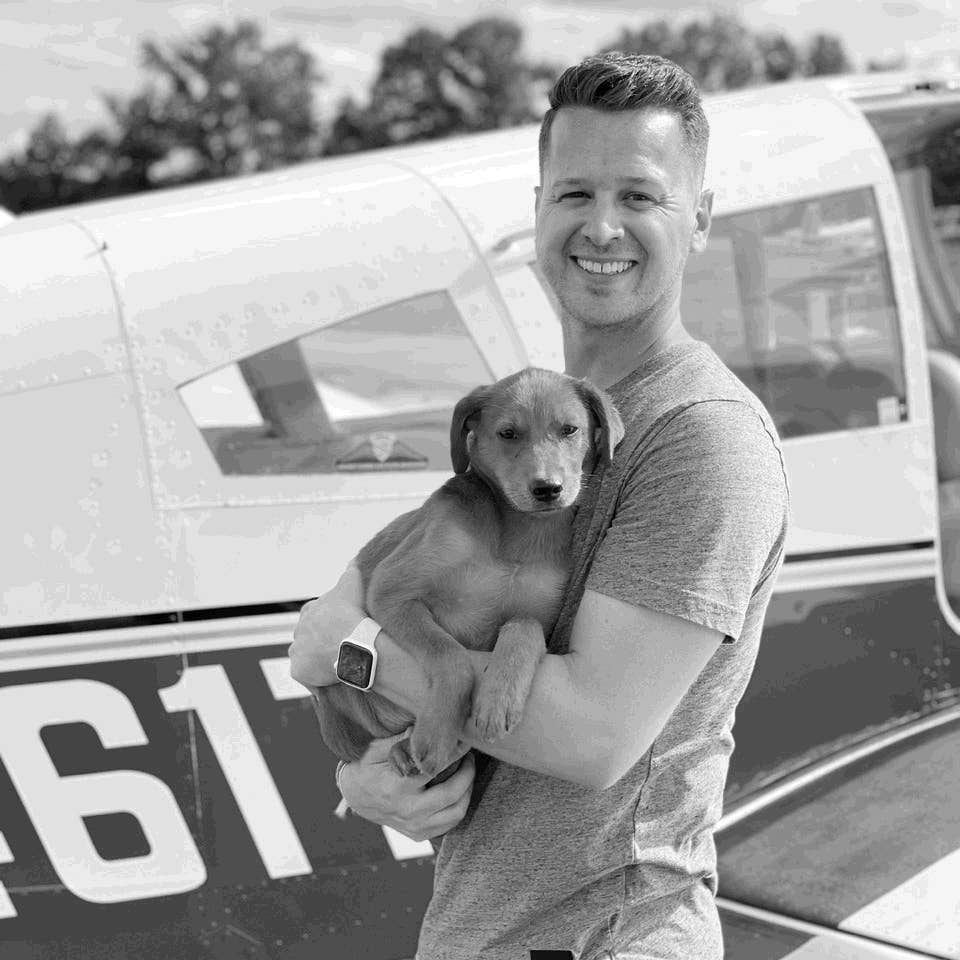Rescue a Pet, Build the Connection
Pilots help furry friends while building flight experience.

[Courtesy: Pilots N Paws]
There's a connection between aviators and animals. You have probably been to an FBO that has a resident dog or cat on the premises. These animals often have aviation-related names like Piper or METAR——and are very often rescues from a local shelter. Animal rescue is a cause that many pilots can and do support. If it has fur, fins, or feathers, there is probably a volunteer pilot organization dedicated to its transport.
Pilots N Paws
The group Pilots N Paws is a 501(c)(3) nonprofit organization and one of the most active volunteer animal transport groups in the U.S. The website forms a digital meeting place for volunteers who are “engaged in the valuable services of rescuing, sheltering and adopting animals, and volunteer pilots and plane owners willing to assist with animal transportation.”
The first official Pilots N Paws flight took place on February 8, 2008, when Pilots N Paws co-founder Debi Boies and pilot Jon Wehrenberg facilitated the rescue of a Doberman by flying the dog from Florida to South Carolina—an act that saved the dog's life.
Since then, the organization has expanded to transport not only dogs, but also cats, rabbits, guinea pigs,and reptiles to homes where they can be fostered and eventually adopted to forever homes. Sometimes the flights are full-blown rescues, when the animals are endangered by a natural disaster—such as a hurricane—and at other times, they are rescued just in time from kill shelters.
Enabled By Technology
Pilots N Paws would not be possible without the internet. The organization has a ride board where volunteer pilots and volunteer ground transport crew can find information about who needs transportation in the area. Contact information is provided to the volunteers, who can reach one another and make arrangements. Most of the aircraft used for these flights are general aviation two- and four-seat designs. On average, the flights cover a distance of about 250 nm one way. If the trip needs to be longer than that, arrangements are often made for a second aircraft to be utilized for the next leg of the flight.
The ride board has tips for successful transport, such as what size crate to use and appropriate bedding material for the animal in question. Most animals are transported in crates both for their safety and for that of the pilot. The organization notes that it is important to thoroughly clean the crates and aircraft seats aftereach flight to lessen the chance of virus transmission.
All of the animals are required to have up-to-date vaccinations prior to transport. There is information for obtaining veterinary assistance prior to the flight; for example, if an animal needs to be sedated, that is a task best left to the professionals. Some of the pilots bring along a friend who can keep an eye on the animals while the pilot flies.
How to Volunteer
In order to provide transport, pilots in the area doa search on the site to see who needs assistance. The pilot has to determine if their aircraft is capable of doing the mission and then it is up to them to set up the flight. Sometimes the pilot needs to educate the person seeking transport about the limitations of the aircraft, and the realities of weather (icing, thunderstorms) that can keep light GA aircraft on the ground.
Because it is a volunteer organization, the participants are “not permitted to solicit funds or promote the services of any other animal rescue, sheltering, or transportation organization without express permission of Pilots N Paws.” No fees are charged for the flights, and pilots pay out of pocket for fuel, ramp fees, and any aircraft rental.
According to a Pilots N Paws spokesperson, the organization currently has 6,000 volunteer pilots, more than 12,800 registered users on the website, more than 338,000 Facebook followers, and volunteers in all 50 states. “We now fly more than 15,500 rescue animal seach year,” the spokesperson reports. “To date we've flown nearly 200,000 animals."
Meet the Pilots
Nick Blair, Pilots N Paws volunteer, flies a Piper Archerout of Kansas City, Missouri. When FLYING caught up with Blair, he had been with the organization for a little more than a year. He says it has been a way to log flight hours that’s more fulfilling than just boring holes in the sky.
“Pilots N Paws mixes my love of aviation and animal rescue,” he explains, noting that most of the dogs he has transported simply sat in the backseat on a blanket. If a kennel/crate is required, the volunteers from the shelter or rescue organization supply it.
The logistics of each transport are mission specific and can be complicated so communication is key. Usually, the organizer has everything planned through the Pilots N Paws forum. The pilots, fosters, and adopting organizations keep in touch via text messages during the mission. “Pilots N Paws is all volunteer—through the amazing efforts of fosters, shelters, and pilots—the lives of innocent animals are being saved on a daily basis,” Blair says. “The animals tend to show gratitude for what you are doing for them. They all have their own special way of saying thank you."
Help the Animals, Help Yourself
Michael Broyles-Shaw from Fort Gordon, Georgia, became a part of Pilots N Paws as a freshly minted private pilot. The organization provides him with a way to build his hours “with something meaningful.” He flies a rented Cessna 172 on his missions.
“Having been a certified veterinary technician before, I had heard of Pilots N Paws from rescues and shelters that I had previously worked in practice with,” Broyles-Shaw says. “I was able to locate their website, and it was really easy to register and get access. It was a perfect fit that balanced what I was trying to accomplish, my previous professional background as a CVT, and my love for helping animals.
“Once you’re signed up on the Pilots N Paws website, you get access to an electronic forum,” he says. “Here you can find information about all transports required, completed, or canceled. You can read stories for successful transports, view photographs, share in-formation about pet-friendly FBOs. There is a ton of information available on there. It’s a team effort, we all work with each other to coordinate the transport. Pilots N Paws’ website gives us that central location to make it all happen.




“As the pilot, I’ll complete all responsibilities that fall on a dispatcher that directly relate to pre-, during, and post flight,” he continues. “In terms of the animal, we work as a team to coordinate with other pilots, volunteers who drive, the party that requested the transport, and the party that is receiving the animal.”
He continues, “For example, I transported a canine named Sophia who originated from a shelter in Louisiana. She had been suspected of being pregnant and should have been due to whelp soon. Her shelter was not climate controlled. Sophia needed to be transported to Pinehurst, North Carolina, to Elissa Dunn of Barking Back Rescue.
“Elissa had coordinated a volunteer to drive Sophia to a pilot in Auburn, Alabama. He and I coordinated together for him to deliver her to me at Daniel Field in Augusta, Georgia [KDNL]. From there, I and a local professional dog trainer transported her to Moore County Airport in Pinehurst, North Carolina [KSOP].”
These transports involve more than point-to-point flying, Broyles-Shaw says. “I created my flight plan and modified it more times than I can count, called the airport to arrange parking and fuel, reviewed the weather tons of times, coordinated with Elissa and the other pilot, planned for emergencies, coordinated with a veterinarian to ensure a good altitude was chosen for a pregnant canine and for flow-by oxygen, if needed, etc. By the time everything was said and done, from the start of planning to tying down the plane for the night, I had put in just under 13 hours of planning in about a week and a half.
Wings of Rescue: The Big Lifts
Sometimes you need a bigger effort to rescue animals. Enter Wings of Rescue (WOR), founded in 2012. WORis a 501(c)(3) organization that uses Pilatus PC-12s and Embraer EMB 120 Brasilias to rescue animals and transport aid all over the world.
“Our mission is to move as many adoptable pets as possible from disaster areas and overflowing shelters to places where they can be adopted and do it efficiently and cost effectively, deliver humanitarian supplies to hard hit areas, promote spay and neuter programs, and promote good will,” says WOR spokesperson Gene Gable.
The animal rescues often come from shelters in areas that have been hit by natural disasters, such as hurricanes or volcanic eruptions. The idea is to take the animals already in the shelter and waiting for adoption to places where they can be adopted, to free up the shelter space for animals that have been separated from their families.
“We try very hard to make our flights productive both coming and going, especially when we are flying into a disaster area,” says Gable, noting that care is taken not to pick up pets that are lost during disasters.
“The whole point is to make it easier for local shelters to house those pets until they can be reunited with their owners,” he continues. “Our protocols virtually guarantee we never remove a pet that could, in fact, just be lost. All pets we fly have to be already cleared by the local shelter for adoption and meet certain hold-time requirements.”
Unlike many of the other animal rescue organizations where the pilot pays their own way, WOR covers the operating costs for its flights, which are often done using chartered aircraft, and flown internationally with as many as 100 animals on board.
The organization works with the American Society for the Prevention of Cruelty to Animals to develop a set of pet-transport protocols, which are followed to ensure the safety of the pets. “There are also standard animal transportation rules which all airlines must follow, and we do, as well,” Gable says.
Coordination is key. When a WOR flight arrives at an airport, it may be picking up or dropping off up to100 animals. Parades of SUVs and vans roll on to the tarmac. The animals are in crates and an army of vol-unteers helps with the loading and unloading.
The FBOs are carefully selected, Gable notes. “Loading and unloading the pets requires that vehicles from our shelter partners have access to the tarmac, and there are often quite a few people involved. So easy access, location within the airports, accommodating staff, etc., all factor in. And since we also often have media coverage, we need to have journalist access as well.
“Our charter pilots are well trained and we bring them up to speed on pet-specific protocols on a flight-by-flight basis. Our volunteer pilots do go through some training, and typically fly as a passenger on one of our regular flights first, so they can learn first-hand.We have strict rules about how pets are handled on the tarmac, but that is usually done by our own staff or our shelter partners, and not necessarily by the pilots (though many do help). All of our pets are crated and have water in their crates, and each carries extensive paperwork with it, including medical clearance by a licensed veterinarian.”
In 2021, WOR flew 104 missions, carrying 8,566 pets to safe havens, including 6,185 dogs, 2,357 cats, 16 rabbits, and 7 guinea pigs. Its volunteers also delivered 67,304 pounds of emergency veterinarian and humanitarian aid.
The efforts of both Pilots N Paws and WOR highlight the enduring connections between pilots and animals, and the utility of general aviation aircraft to lend a helping hand—and a little lift—to creatures great and small.

Sign-up for newsletters & special offers!
Get the latest FLYING stories & special offers delivered directly to your inbox






